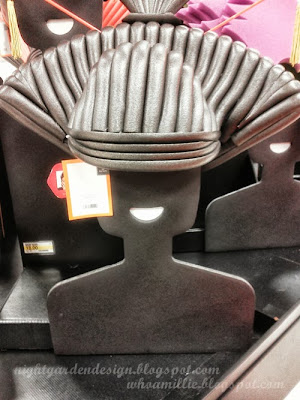I could have used a regular toy hammer and spray painted that gold, but I thought something scaled a little more cartoonishly large would be fitting for Fix-It Felix.
I used a 90-cent piece of foam pipe insulation from the hardware store (it's sold in six-foot lengths), a piece of doweling that fit the space in the center, and some duct tape in regular and gold colors.
The handle is cut from an 18-inch piece, with an 8-inch top and two 1.5-inch pieces for the hammerhead.
I used an 18-inch dowel to connect the pieces.
The two pieces of the hammer head fit around the end.
Here's another photo to help illustrate how they fit (some trimming will be necessary to help them fit exactly).
Then I trimmed the other end to make it look more like a hammer. The bits I cut off were used to fill the hollow spaces at the end of the handle and the hammerhead.
I secured all of the parts together with a layer of standard duct tape. Kids are kinda rough on stuff, so I made sure everything was extra sturdy.
Finally, a decorative layer of shiny gold duct tape to make it shine!
And there you have it! A perfect Fix-It Felix hammer.
You can click here to see how I made a Fix-It Felix cap for the kiddo's costume and here for a tutorial on the shirt and patch . . . and of course, here for my post on Felix's tool belt, pants, and boots. Thanks for reading!



















































